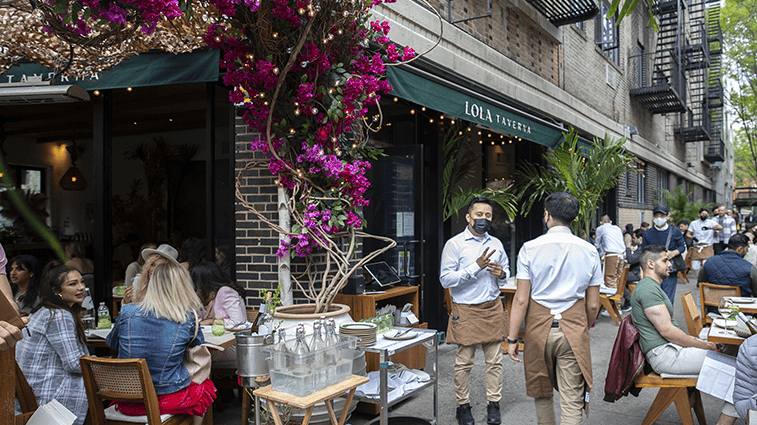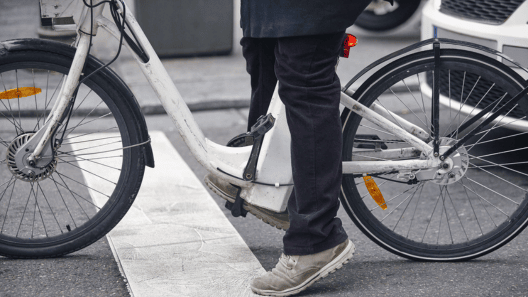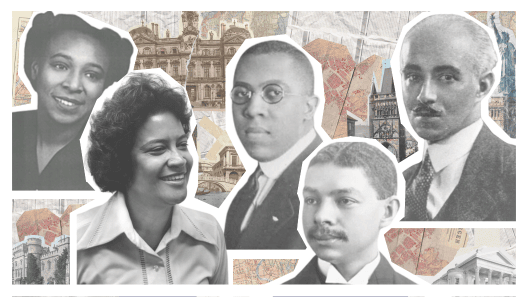
Al Fresco Fiascos: Top 5 Potential Outdoor Dining Violations
Common issues to avoid to stay in the NYC Open Restaurants program.
The Open Restaurants program has changed the landscape of New York City streets. It has helped many businesses stay afloat throughout the time indoor dining was banned, and offered a shred of normalcy for diners throughout the past year.
But as these temporary structures could become permanent fixtures for restaurants, New York City will likely buckle down on any unsafe compliance issues for outdoor dining areas.
One recent case of an East Village restaurant attempting to build a second level on top of its outdoor dining shed was quickly reported and shut down by the Department of Transportation, with much publicity. The Open Restaurants program clearly states that outdoor dining sheds cannot be taller than the restaurant itself or higher than one story (whichever is lower).
While this was an extreme example, there are a number of smaller issues for outdoor dining spaces that could get you caught with a violation.
Here are the top issues that could get your outdoor dining area reported:
Unauthorized by Open Restaurants
Before opening outdoor seating areas, food establishments must self-certify that they meet Open Restaurants program requirements with the Department of Transportation (DOT). If your restaurant is not listed in the Open Restaurants Database, you can apply and self-certify today.
Blocked sidewalks or streets
Sidewalk seating must maintain an 8-foot path for pedestrians free from obstructions between the seating and the curb.
For roadway seating, neither the seating nor barriers can extend more than 8 feet from the curb into the street.
Seating also can’t block:
- Bike racks
- Bus stop shelters or waiting areas
- Siamese water connections
- Sidewalk grates
- Utility covers
- Car share or bike share spaces
- Crosswalks or vehicle turning zones
- Fire hydrants
- No Standing or No Stopping Anytime zones
Blocked Building Entrances
Space is limited in New York City, so businesses must try to be respectful of each other’s space, even outdoors. To this purpose, Open Restaurants requires outdoor dining areas:
- Be at least 3’ from adjacent businesses.
- Not exceed the width or height of the food establishment (or exceed one story, whichever is lower).
Absent or insufficient barriers
For roadway dining, proper barriers on all three sides of the seating perimeter are particularly important to protect customers from motorists. Barriers must be:
- At least 18 inches wide and 30-36 inches tall (not counting plantings).
- Marked with yellow high intensity retro-reflective tape or reflectors.
- Placed directly next to each other with no gaps.
- No more than 8 feet from the curb.
They must also:
- Be completely filled with soil or sand.
- Have a fully built interior wall and bottom to hold said filler material.
Lacking required ramps or platforms for accessibility
In order to be ADA compliant, Open Restaurants requires dining areas:
- Maintain a 36-inch minimum travel route throughout.
- Install curb ramps or platforms flush with the curb to connect the sidewalk to the street level.
- Install ramps that cover electrical wiring crossing the sidewalk or on the roadway.
- Make at least 5% of dining surfaces (but no less than 1) accessible for seating and standing.
A lack of any of these things can warrant a violation. However, the platforms themselves can become a hazard if not properly installed. Platforms can be cited for:
- Disconnection from the curb.
- Blocking rainwater drainage to or along the curb.
- Blocking access to ventilation or utility covers.
These rules may be expanded in the coming months and years as legal changes to make Open Restaurants permanent take shape. But for now, with these common issues in mind, you can take steps now to keep your outdoor dining open all year long.
If you need assistance designing or renovating your seating area in a code-compliant way, feel free to reach out to the code and zoning experts at Outsource Consultants.
Resources
- Open Restaurants program
- Decoder – “Bites and Barriers”
- Pix11 – “Construction on 2nd floor of outdoor dining structure in East Village stopped by NYC”
- NYC311 Outdoor Dining Complaints
- Open Restaurants Database








